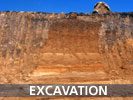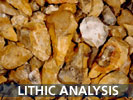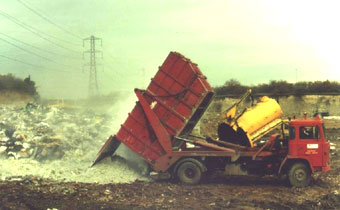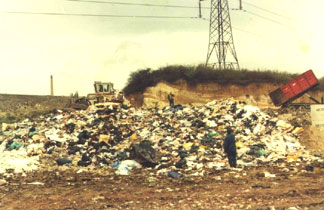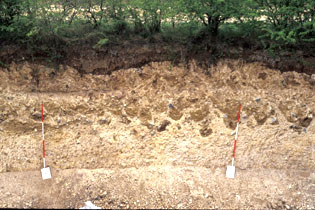|
PhD, Baker's Hole, Kent Baker's Hole has been subject to at least five major phases of research, preceding my thesis and subsequent work in relation to the Channel Tunnel Rail Link: At the start of the PhD, it was unknown where most of these sites were located and how they related to each other, and most of the lithic material remained unanalysed in collections across the country (as well as Canada, Australia and the USA). It was generally thought that most of the significant deposits were quarried away, and the site was being rapidly landfilled.
Comprehensive archival research supplemented by a field survey were carried out, leading to the identification of all the locations of the previous work, including previously unrecognised surviving sediments. It was possible to improve understanding of the overall stratigraphic relationship of deposits across the site, although there still remains uncertainty over the relationship of deposits between certain key parts of the site, such as the sources of Burchell's and Smith's artefact collections.
The major lithic collections made by Smith and Burchell were fully analysed. It was found that Smith's collection contained a major element of early blade production, similar to that found at Crayford, alongside the classic Levalloisian tortoise core technology, whereas Burchell's collection entirely lacked the tortoise element and consisted entirely of unspecific flake or early Crayford-type blade production. Refitting material was found within both Smith's and Burchell's collections confirming the significance of the collections, and the importance of the deposits lost to quarrying. Study of the faunal remains, including small vertebrates collected as part of the PhD fieldwork, established beyond reasonable doubt that many of the surviving sediments date to Oxygen Isotope Stage 7, approximately 200,000 to 250,000 years ago. This date is also supported by amino acid dating of molluscs and OSL dating of the sediments. However these dated deposits did not contain any of the lithic evidence, so dating of the lithic material remains problematic, although it is hoped to address this further in relation to the CTRL investigations. References Wenban-Smith, F.F. 1990. Researching the Early Palaeolithic: an organisational manifesto. Lithics 11: 16–23. Wenban-Smith, F.F. 1992. Early Palaeolithic cultural facies and the Levalloisian at Baker's Hole. Papers from the Institute of Archaeology 3: 1–10. Wenban-Smith, F.F. 1992. Interim report on current Pleistocene research in the Ebbsfleet Valley, northwest Kent. Archaeologia Cantiana. 110: 384–388. Wenban-Smith, F.F. 1993. The least picturesque site? Current Archaeology 134 (vol. XII, No. 2): 78. Wenban-Smith, F.F. 1995. The Ebbsfleet Valley, Northfleet (Baker's Hole). In D.R. Bridgland, P. Allen & B.A. Haggart (ed's) The Quaternary of the Lower Reaches of the Thames: Field Guide: 147–164. Quaternary Research Association, Durham. Wenban-Smith, F.F. 1996. The Palaeolithic Archaeology of Baker's Hole: a Case Study for Focus in Lithic Analysis. Unpublished PhD thesis, Department of Archaeology, University of Southampton. |
|
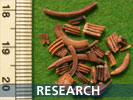 |
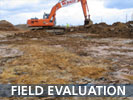 |
 |
 |
